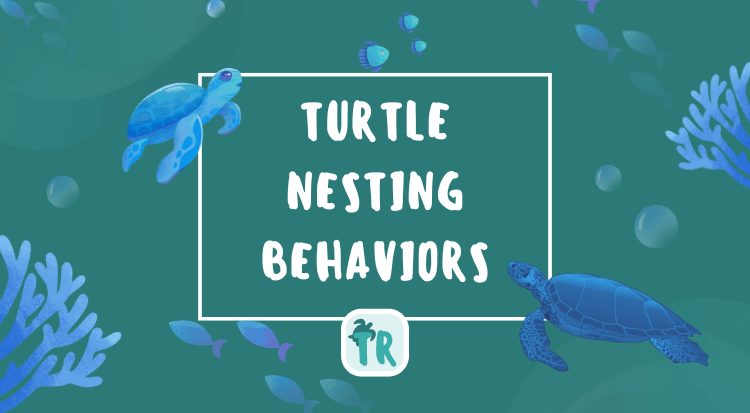Turtle Nesting Behaviors: Class 101
Discover your turtle's nesting behaviors with our guide. Learn how to recognize signs, set up a nesting area, and care for your pet during egg-laying.

Understanding your turtle's nesting behaviors can help you provide better care. Female turtles have unique habits when it comes to laying eggs. Even if no male turtle is present, a female may still lay unfertilized eggs.
This guide will explain why turtles nest, how to recognize nesting behaviors, and how to set up a suitable nesting area. By learning about these behaviors, you can ensure your turtle feels safe and comfortable.
Why Do Turtles Nest?
Nesting is a natural behavior for female turtles. They lay eggs to reproduce but may also lay unfertilized eggs without a male.
- Reproductive Cycle: Female turtles have a cycle that leads them to produce eggs.
- Instinct: Even if the eggs won't hatch, instinct drives nesting.
- Health Reasons: Laying eggs helps prevent egg binding, a severe health issue.
Recognizing Nesting Behaviors
Knowing the signs of nesting can help you prepare.
Restlessness
Your turtle may become more active than usual.
- Increased Movement: Walking around the habitat frequently.
- Clawing at Corners: Trying to dig or escape.
Digging
Digging is a key sign of nesting behavior.
- Scratching the Substrate: Using her back legs to dig.
- Moving Substrate: Rearranging the bedding material.
Changes in Appetite
Your turtle's eating habits might change.
- Reduced Eating: Eating less due to focus on nesting.
- Seeking Calcium: May show more interest in calcium sources.
Setting Up a Nesting Area
Setting Up a Nesting Area: Your role in providing a proper nesting area is crucial for your turtle's well-being and safety.
Choosing the Right Substrate
Use materials that are easy to dig.
- Soft Soil: A mix of topsoil and sand works well.
- Moist but Not Wet: The substrate should hold its shape without being soggy.
Nesting Box
Create a dedicated space for nesting.
- Size: Large enough for your turtle to turn around comfortably.
- Accessibility: It is easy for your turtle to enter and exit.
- Privacy: Place it in a quiet area to reduce stress.
Temperature and Humidity
Maintain suitable conditions in the nesting area.
- Warmth: Keep the temperature between 75-85°F (24-29°C).
- Humidity: Moderate humidity helps the substrate hold together.
Assisting Your Turtle During Nesting
Your support can make the process smoother.
Minimize Disturbance
Give your turtle space and privacy.
- Quiet Environment: Reduce noise and activity around the habitat.
- Limit Handling: Avoid picking up your turtle during this time.
Monitor Health
Keep an eye on your turtle's well-being: This is a key part of your role as a responsible turtle owner, ensuring your pet's health and safety.
- Observation: Watch for signs of stress or difficulty.
- Consult a Vet: If your turtle seems unwell or can't lay eggs, seek professional help.
Dealing with the Eggs
After your turtle lays eggs, you must decide what to do with them.
Unfertilized Eggs
If there is no male, the eggs won't hatch.
- Removal: Gently remove and dispose of the eggs.
- Handling: Wear gloves and wash your hands afterward.
Fertilized Eggs
If you have a male turtle, the eggs might be fertile.
- Incubation: If you wish to hatch them, set up an incubator.
- Professional Advice: Consult a vet or expert for guidance.
Preventing Unwanted Eggs
If you prefer that your turtle doesn't lay eggs, there are steps you can take.
Adjusting Light Cycles
Manipulating light exposure can influence egg production.
- Shorter Daylight Hours: Reduce light to mimic non-breeding seasons.
- Consistent Schedule: Keep lighting times regular.
Diet Management
Proper nutrition can impact egg laying.
- Balanced Diet: Ensure your turtle gets all the necessary nutrients.
- Calcium Intake: Adequate calcium is essential, but over-supplementation should be avoided.
Environmental Factors
Creating a less stimulating environment may reduce nesting.
- Temperature Control: Maintain steady temperatures.
- Habitat Setup: Remove nesting materials if appropriate.
Health Concerns Related to Nesting
Be aware of potential health issues.
Egg Binding (Dystocia)
When a turtle can't lay her eggs, it's serious.
- Symptoms: Swollen body, lethargy, straining without success.
- Action: Seek veterinary care immediately.
Calcium Deficiency
Laying eggs uses a lot of calcium.
- Supplements: Provide calcium sources like cuttlebone.
- Diet: Include calcium-rich foods in her meals.
Conclusion
Understanding nesting behaviors helps you support your female turtle's needs. You ensure she can lay eggs safely by recognizing the signs and providing a proper nesting area.
Keep an eye on her health during this time, and don't hesitate to consult a vet if you have concerns. Your turtle will feel comfortable and secure in her habitat with the right care.
